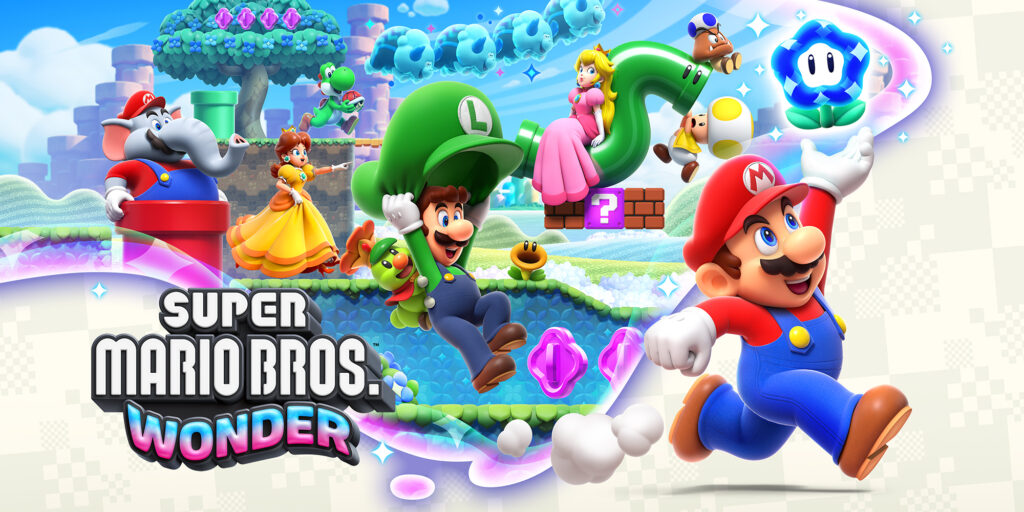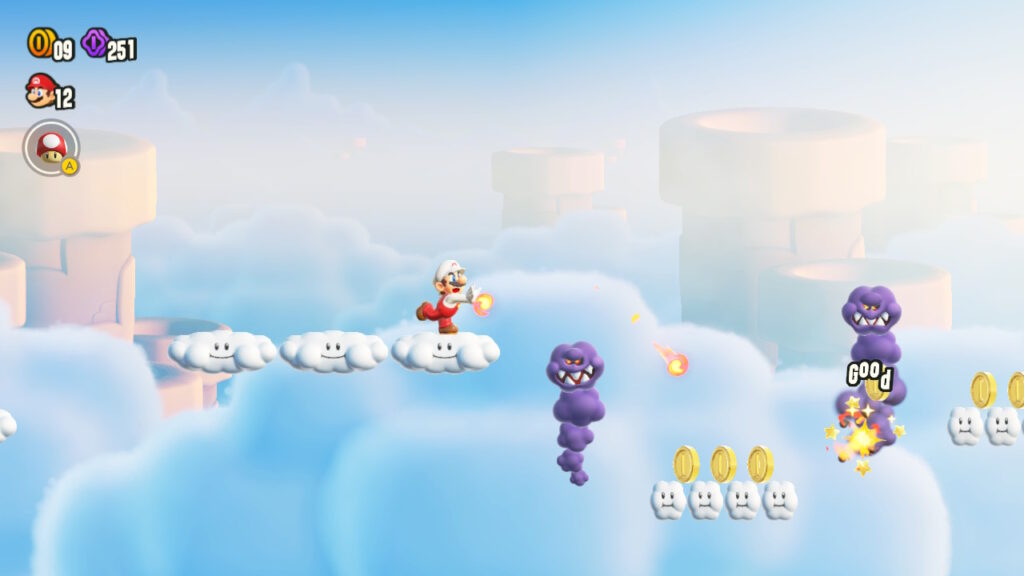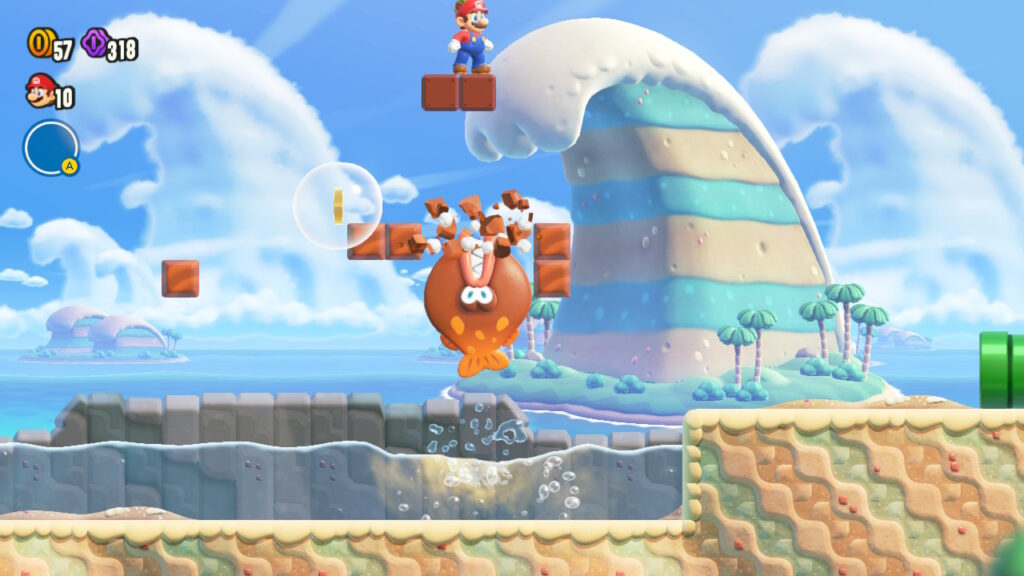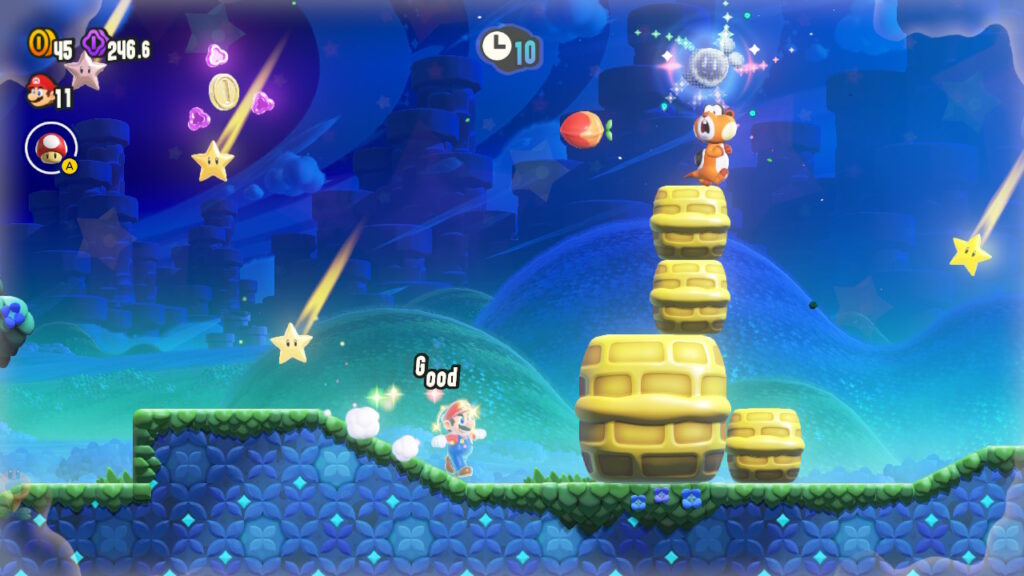
Developer: Nintendo
Publisher: Nintendo
Platform: Switch
Tested on: Switch
Super Mario Bros. Wonder – Review
We’re entering the final stretch before the holiday shopping season really kicks off, and the big studios are bringing their heavy hitters to shelves and digital storefronts near you. Seeing Spider-Man 2, Sonic Superstars, and Super Mario Bros. Wonder arriving in the same week should tell you enough about how strong 2023’s end-of-year video game slate is. Miles Morales and Peter Parker are in a league of their own, of course, but in the battle between the blue blur and Brooklyn’s finest plumber, it quickly became clear who the winner is, both in terms of sales and critical acclaim. We’re more than eager to join the chorus of critics praising Mario’s latest outing, so if you are still on the fence, read on to find out why you absolutely should play Wonder.
Story
It’s business as usual: Bowser is up to no good, and it’s up to Mario and his friends to stop his nefarious plans. This time around, it’s not the Mushroom Kingdom that is being threatened, but the neighboring Flower Kingdom, and instead of a princess being kidnapped, Bowser has merged with the Flower Kingdom’s royal palace. The story is probably the weakest aspect of Wonder, but in all honesty, who plays Mario games for the story?
Graphics
With nearly seven years of age under its belt, and relatively underpowered hardware to begin with, the Switch is often derided for not being the graphical powerhouse that the PS5 and Xbox Series X|S are. This makes it all the more impressive when a game truly shows the Switch’s visual potential, and if there is one studio that can bring out that potential, it’s good old Nintendo themselves, of course. The cartoon aesthetics of the Mario series have never looked better than they do here, with gorgeous lighting effects and tons of fun little background details. Performance is fantastic as well, both in handheld mode and docked, with a buttery smooth frame rate.
Sound
Let’s start by addressing the proverbial elephant in the room: this is the first Mario game since the N64 era where Mario and Luigi weren’t voiced by the legendary Charles Martinet. Fortunately, the contrast with new voice actor Kevin Afghani isn’t as big as it was when Chris Pratt voiced Mario, and there is a good chance you wouldn’t even hear the difference if you didn’t know about the change. The Flower Kingdom is also littered with talking flowers that provide humorous commentary as you make your way through the levels. While this was a fun little feature for a few minutes, we quickly disabled this, however, as the constant talking of the flowers got annoying really quickly. It’s a minor blip on what is otherwise an excellent soundscape. The Mario series has established its musical prowess as well, and this tradition is continued. You won’t hear the same familiar tunes all over again, but the new tracks fit right in with the classics.
Gameplay
While Mario has dipped his toe in pretty much every genre out there, it’s 2D platforming that he is best known for. If you ask people to think of what a Mario game is like, the first thing they’ll think of will be a 2D platformer. Likewise, if you ask someone to think of a 2D platformer, the first thing that will pop into their head will be a Mario variant. This is the quintessential platformer series, and given that a decade has passed since the previous 2D Mario platformer, New Super Mario Bros U., it’s understandable that expectations for Wonder were astronomically high. Meeting those expectations did pose a major challenge for Nintendo, however. The New Super Mario Bros. games were solid but didn’t quite improve on the established formula, and the Mario Maker community had seemingly pushed the core gameplay to the limit. The answer? Completely throw established conventions out the window and cram every idea, no matter how crazy, in the game. And boy, does this work.
Granted, the core experience remains faithful to what everyone knows and loves. Players still step into the shoes of Mario (or one of his friends) and run through a level filled with enemies and obstacles to overcome. There are coins and powerups to be collected, pipes that lead to hidden areas to crawl into, and a flagpole that the mustachioed plumber tries to jump on top of at the end. Over three decades in, the basics haven’t lost any of their shine. What makes Wonder so unique, however, is everything that happens between point A and point B. The new level designs are varied and inventive, and most levels shake things up around the midway point, when Mario grabs a blue flower that transforms the surroundings in a trippy way. Suddenly you find yourself at the centre of a musical performance by Piranha Plants or riding on the back of a herd of Bulrushes. Wonder is built around surprising the player, and it does this with great success. If there is a downside to this, it is that the game lacks focus, especially in the first half. It is so incredibly charming, however, that it’s easy to forgive Wonder for being as all over the place as it is.
In a way, this breakaway from what we’ve come to expect also means that Wonder is more difficult than previous entries in the series. Don’t get us wrong, it’s not like the Mario series is moving into Dark Souls territory, but the unexpected behavior of new enemy variants can catch you off guard, resulting in game-overs. Wonder isn’t unfair to the player, however. You’ll just need to rely a little more on trial and error to make it across levels unscathed. To mitigate this, you can clear levels using Nabbit or Yoshi. They won’t take damage, although the caveat is that they cannot use power-ups. They aren’t entirely invulnerable either, as they can still die from a pitfall. Still, if you’re trying to figure out a particularly tricky level, it may be a good idea to swap to one of these characters to find your footing. The time limit has also been removed from most levels, giving you ample time to explore, and each level also indicates how difficult it is with a number of stars.
As for those powerups, Wonder introduces quite a few new ones. The most noticeable one is, of course, Elephant Mario, because it has been front and centre in the game’s marketing, but variants like Bubble Mario and Drill Mario also shake up gameplay, alongside classics like Fire Flower Mario. In addition to the familiar power-up mechanic that has been in these games since the original Super Mario World, Wonder introduces a secondary system with its badges. These act as a quasi-permanent powerup that you can equip, although you are limited to a single badge at a time. Some of these are more useful than others, like a badge that lets you use your hat as a glider, or one that lets you dash while swimming, compared to one that simply gives out additional coins as you move through levels.
You can tackle Wonder all by yourself, of course, but the game allows for up to four players to team up to get together and play the game in couch co-op. This is something that is especially fun if you have younger kids who wouldn’t be able to play the game themselves. Have them pick Nabbit or Yoshi and team up to enjoy Wonder together. Additionally, Wonder also has limited online functionality. You can see silhouettes of other players and try to beat their time, for example. Wonder’s online features aren’t intrusive and you can ignore these if you wish. Given that most of the time we spent playing the game was on our commute, we didn’t really try them out but we also didn’t feel like we were missing out by not making use of them.
Conclusion
Nintendo has successfully reinvented the classic Mario platformer with Super Mario Bros. Wonder. While the previous 2D Mario platformers were still good, they weren’t particularly innovative. Seeing everyone’s favorite plumber return to form, in a way we didn’t even know we needed, is absolutely wonderful. This might not be Nintendo’s biggest game of the year, as that honor goes to Tears of the Kingdom, but Wonder is a mighty fine runner-up for the must-have Switch title of the year.
6 Comments
Leave a Reply
You must be logged in to post a comment.










[…] Super Mario Bros Wonder currently grabbing everyone’s attention, of course, Mario’s self-declared biggest rival […]
[…] a whole, the story is a lot meatier than most Super Mario adventures, and the game does flesh out the story via many dialogues. The narrative still remains quite simple […]
[…] is, there aren’t a whole lot of indie games aimed at the younger crowds. Sure, you have your Marios and your Pokémon, but apart from Nintendo’s own offerings, it’s as if young kids are stuck […]
[…] the Mario series and its various spin-offs. Within the last six months, we’ve seen the release of Super Mario Bros. Wonder, Super Mario RPG, and WarioWare: Move It, and now another game joins this lineup. A remake of the […]
[…] around the mustachioed plumber, and it hasn’t been that long since we took a closer look at Super Mario Bros. Wonder, which was released in October of 2023. Other characters also get their own title once in a while, […]
[…] was a time when Pac-Man was up there with Mario and Sonic as one of the most famous and recognizable video game characters. Unlike the mustachioed […]